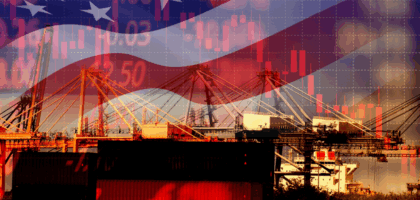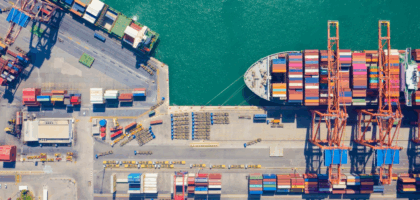Bad weather and natural disasters are inevitable. In recent years, these unwelcome incidents have continuously increased, causing devastation for populations and wreaking havoc on supply chains which, in turn, affects virtually every industry. Although unavoidable, there are some actions you can take to prepare your supply chain from being completely blindsided by one of these weather occurrences.
Be Proactive, Not Reactive
We’ve all heard the adage “be proactive, not reactive.” This is especially true for your supply chain. And although this is an overarching idea, you can do a few things to stay at the forefront of bad weather that’s coming your way.
- Check weather reports locally and nationally to see what areas will potentially be impacted by the storm or natural disaster.
- Put a detailed plan in place to respond to potential supply chain disruptions should a natural disaster occur. This can include creating alternate routes for transportation and communication mediums.
- Going a little bit more in-depth on the above point, you can also perform an impact analysis that dives deeper into your supply chain and looks at the areas that are the most vulnerable to disruption. By doing this type of analysis, you can pinpoint exactly how you will plan for recovery in lieu of a disaster by developing cost-effective strategies.
Remain Flexible
Being flexible is key for any supply chain. Even the slightest change can create a bigger domino effect that could have been avoided if you provided the opportunity for flexibility. If there is an upcoming storm or natural disaster heading your way, and your business can afford to move shipments forward or back, avoiding bad weather can help avoid looming issues.
In addition, even before a storm or extreme weather event is on the radar, you can consider utilizing different modes of transportation during particularly unpredictable times of the year (i.e., shipping product via ocean during the peak of hurricane season, or trucking equipment across a mountainous region in the dead of winter). Certain modes fare better than others during certain times of the year. That being said, nothing is guaranteed, but remaining flexible in your transportation options can help decrease that volatility.
Diversify Your Sourcing
Is it more efficient and affordable to utilize single sourcing? Yes. Is it more resilient to potential disruptions? Absolutely not. Having multiple sources is critical to your inventory and your ability to bounce back quickly from extreme weather disruptions. One recent study found that diversity accounts for more than 90% of how extreme and frequent supply chain shocks are in an area.
When your supply chain relies on a single source or route, any disruption to that area will cause rippling effects. By having multiple, diversified sources means that localized incidents will have a far smaller impact on your overall supply chain. Not only does diversification mitigate emergencies, but they also give supply chains more flexibility.
Move High-Value Inventory Away from High-Risk Areas
We understand no one has the power to control the weather, but they can minimize the changes of encountering an extreme weather event.
Businesses have warehouses all over the country, and no matter where they are, all will experience some type of inclement weather, but some areas are much more prone to natural disasters than others. In 2020 alone, California experienced 10,341 of the 58,362 wildfires that occurred within that year—far more than any other state. Moving your high-value inventory out of high-risk areas, such as these, can mitigate potential damages and complete losses from extreme weather.
If you think it’s time to reconsider your warehouse sites, review where your most vital inventory is located and what risks the surrounding areas pose. Remember—there is no such thing as a “risk-free” area, but some locations present less of a risk than others.
Communicate, Communicate, Communicate!
When dealing with any type of weather-related supply chain issue, the first step is to maintain lines of communication both internally and externally. Whether you’re the one expecting a shipment, or you are overseeing the delivery of a shipment for one of your end users, always remain in communication with your employees, suppliers, and logistics providers! Staying one step ahead and being proactive could be the difference in a thriving supply chain versus one that has to spend time figuring out how to recover.
Our team is constantly staying up to date on weather-related occurrences that could negatively impact our clients and their supply chains. Although extreme weather can prevent shipments from moving, we are advocates in remaining communicative, collaborative, and flexible in any unforeseen and uncontrollable weather situation. We will work with you continuously through every weather emergency and make sure you stay in-the-know.
Resources:
- Snow Joke: How to Prepare Your Supply Chain for Bad Weather (Altius)
- How to Prepare Your Supply Chain For Natural Disasters (US 1 Network)
- Preparing a Supply Chain for Extreme Weather Conditions (BOSS Magazine)
- How You Can Prepare Supply Chain for Bad Weather (Tenax Transport)



